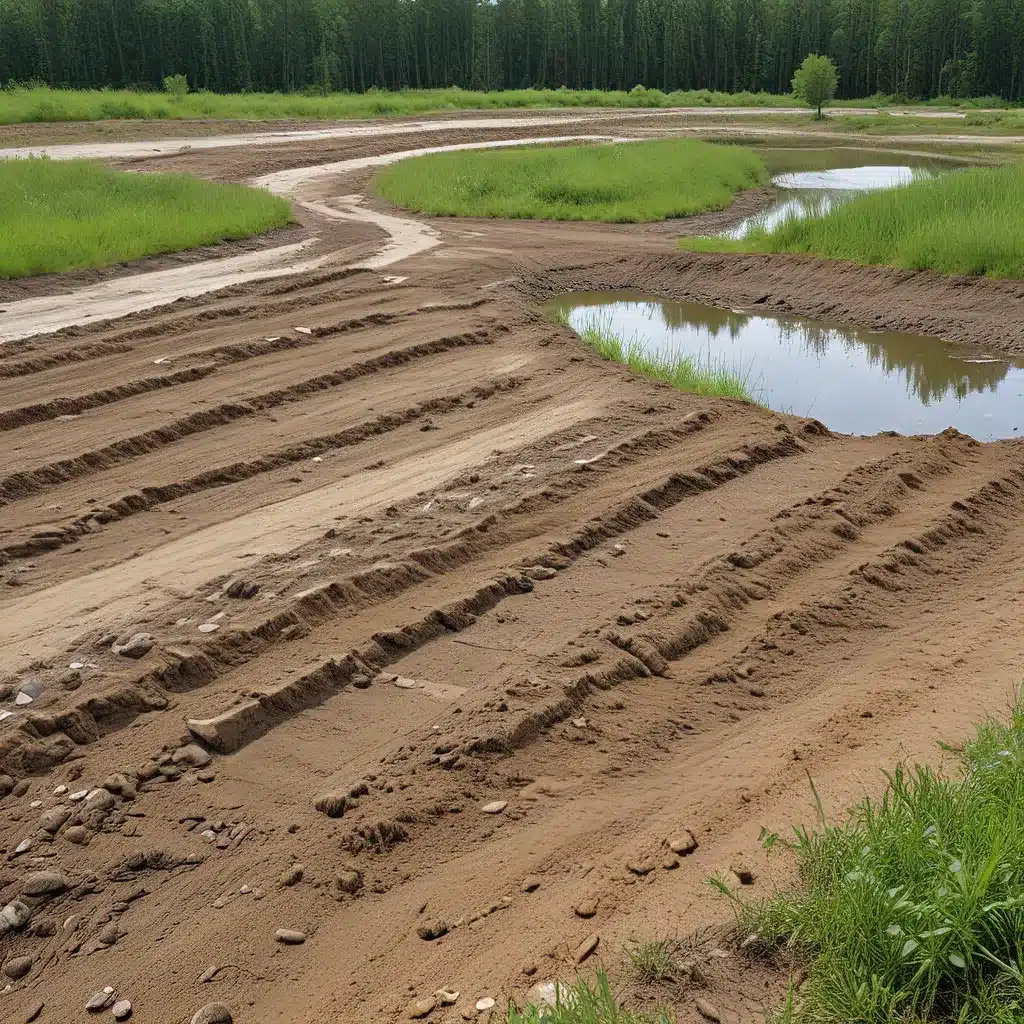
As an environmental enthusiast, I’ve always been fascinated by the intricate dance between human progress and the delicate balance of our natural world. It’s a tango of innovation and preservation, where we must continuously seek ways to responsibly harness the resources that sustain us, while safeguarding the very ecosystems that give us life. And at the heart of this challenge lies the art of site remediation – a practice that seeks to restore contaminated environments, not just for our benefit, but for the sake of the diverse flora and fauna that call these places home.
Understanding the Eco-Friendly Approach
Traditionally, site remediation has often relied on heavy-handed chemical treatments or energy-intensive excavation methods, which can leave lasting scars on the landscape. But in recent years, a more enlightened approach has emerged – one that draws inspiration from nature itself. Bioremediation, as it’s known, is a sustainable and eco-friendly technique that employs the remarkable capabilities of living organisms to tackle environmental pollution and contamination.
“Bioremediation uses microorganisms and plants to neutralize pollutants like petroleum hydrocarbons, heavy metals, pesticides, and industrial chemicals, offering an in situ, cost-effective, and environmentally friendly alternative to traditional cleanup methods.” – Bioremediation: A Sustainable, Eco-Friendly Approach to Tackle Pollution
Microbial Marvels
At the heart of this approach are the unsung heroes of the microbial world – bacteria and fungi. These tiny, yet mighty, organisms possess an extraordinary ability to convert harmful substances into less toxic or even non-toxic forms. Imagine a team of microscopic cleanup crews, efficiently breaking down oil spills or precipitating heavy metals for plant uptake. It’s a remarkable display of nature’s resilience and adaptability.
“Microorganisms like bacteria and fungi are key in bioremediation due to their ability to convert harmful substances into less toxic or non-toxic forms, such as degrading oil spills or precipitating heavy metals for plant uptake.” – Bioremediation: A Sustainable, Eco-Friendly Approach to Tackle Pollution
Phytoremediation: Green Cleanup Machines
But it’s not just the microscopic world that plays a role in this eco-friendly approach. Plants, those silent sentinels of the natural world, also have a part to play. Certain species, known as “hyperaccumulators,” possess the remarkable ability to absorb and store pollutants within their tissues, effectively purifying the surrounding environment over time through a process called phytoremediation. Imagine a verdant garden, not just a feast for the eyes, but a testament to nature’s power to cleanse and restore.
“Plants known as hyper accumulators play a crucial role in bioremediation by absorbing pollutants from soil or water, effectively purifying the environment over time through phytoremediation.” – Bioremediation: A Sustainable, Eco-Friendly Approach to Tackle Pollution
Bioremediation in Action: Real-World Success Stories
The power of bioremediation has been demonstrated in real-world scenarios, offering hope and inspiration for a greener future. One remarkable example is the use of bacteria from the Pseudomonas genus to tackle oil spills. These microbes have shown their mettle in breaking down and degrading the complex hydrocarbons that plague our waterways after catastrophic events, like the Deepwater Horizon disaster in the Gulf of Mexico.
“Bioremediation using bacteria from Pseudomonas to break down oil spills and radioactive elements has shown promise in real-world scenarios like oil spill cleanup and Chernobyl disaster site remediation.” – Bioremediation: A Sustainable, Eco-Friendly Approach to Tackle Pollution
But the applications of bioremediation extend far beyond oil spills. In the aftermath of the Chernobyl nuclear disaster, researchers have explored the use of these microbial marvels to tackle the cleanup of radioactive contaminants, offering a glimmer of hope in the face of such overwhelming environmental challenges.
Challenges and Future Directions
Of course, the path to a greener future is not without its obstacles. The success of bioremediation depends on a delicate balance of factors, including the specific contaminants present, the environmental conditions, and the availability of suitable microorganisms. Researchers are constantly exploring new frontiers, experimenting with genetic engineering techniques to enhance the efficiency and applicability of these natural cleanup crews.
“Bioremediation’s success depends on contaminants, environmental conditions, and suitable microorganisms. Researchers are exploring genetic engineering to improve efficiency and applicability.” – Bioremediation: A Sustainable, Eco-Friendly Approach to Tackle Pollution
As we continue to grapple with the legacy of environmental damage and the looming threats of climate change, the promise of bioremediation shines like a beacon of hope. It’s a testament to the power of natural systems, a reminder that the very ecosystems we’ve disrupted hold the keys to their own restoration.
Conclusion: A Greener Tomorrow
So, as we navigate the complex challenges of site remediation, let’s embrace the power of bioremediation – a sustainable, eco-friendly approach that harnesses the inherent capabilities of living organisms to restore and revitalize our damaged landscapes. By cultivating a deeper understanding and appreciation for these natural processes, we just might discover the path to a greener, cleaner future – one where human progress and environmental harmony coexist in beautiful, symbiotic balance.
And who knows, perhaps one day, when we stroll through a thriving, verdant landscape, the very plants and microbes beneath our feet will be the unsung heroes that whisper the story of our collective journey towards a more sustainable tomorrow. After all, as the old saying goes, “the solution is often right under our feet.”
So, let’s roll up our sleeves, dive into the world of eco-friendly site remediation, and see what wonders nature has in store. The future, my friends, is ours to shape – one microbe, one plant, one restored landscape at a time.
Inland Waters Inc. is a leading provider of water treatment and environmental services, dedicated to delivering innovative, sustainable solutions that protect our precious natural resources. To learn more about our commitment to eco-friendly site remediation, visit our website today.


